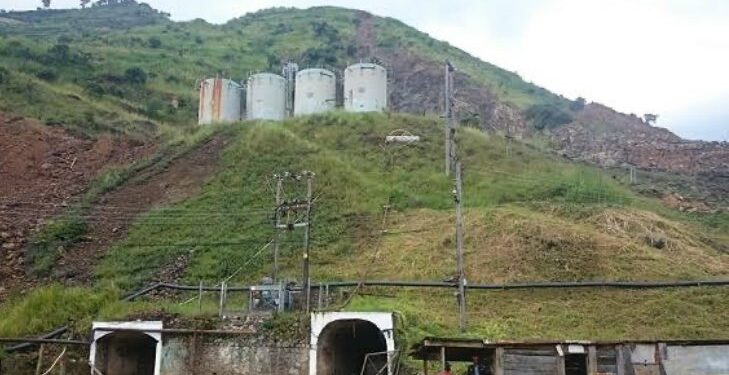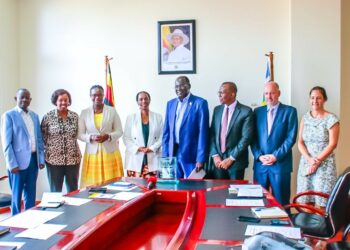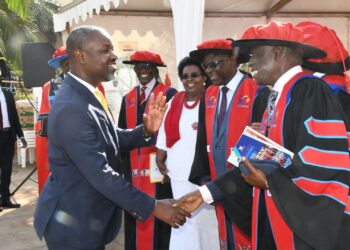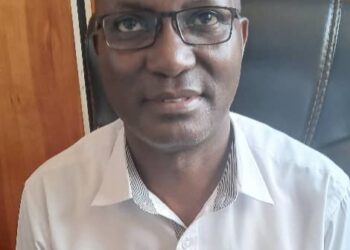In a strategic move poised to capitalize on the burgeoning global electric vehicle (EV) market and bolster its mineral sector, the Ugandan government is meticulously planning the revival of copper and cobalt
extraction at the historic Kilembe mines.
Nestled in the verdant landscapes of western Uganda, near the border with the Democratic Republic of the Congo (DRC), the Kilembe mines hold immense potential for economic revitalization and sustainable development.
The government’s keen interest in tapping into the growing global demand for minerals, particularly cobalt essential for EV batteries, underscores its commitment to diversifying the economy and harnessing the country’s natural resources for inclusive growth.
With the advent of the green revolution, characterized by a shift towards cleaner energy alternatives, Uganda recognizes the pivotal role that locally sourced minerals can play in driving the nation’s transition towards a more sustainable future.
The recent call for bids to rejuvenate mining operations at Kilembe garnered significant attention from industry players, with four prominent entities submitting proposals in December 2023.
Among the contenders vying for the opportunity to partner with Kilembe Mines Ltd (KLM), predominantly government-owned, are Gingko Energy, Liaoning Hongda (trading as Wagagai Mining), Sinomine Power China, and Sarrai Group.
While the government deliberates on its preferred bidder, expectations are high for a fruitful collaboration that will harness the expertise and resources necessary to breathe new life into the mines.
However, the path to revitalizing Kilembe’s mining operations is not without its challenges. The mines, with an estimated four million tonnes of ore rich in copper and cobalt, have a chequered past marked by
periods of prosperity and decline.
From their inception in 1956 to the halting of production in 1982, the mines played a pivotal role in Uganda’s economy, contributing significantly to the nation’s GDP and employment.
The subsequent years witnessed a series of setbacks, including plummeting copper prices and aging infrastructure, leading to the cessation of mining activities. In 2013, hopes were reignited with the awarding of a 25-year concession to Tibetan Hima, a Chinese company, tasked with revitalizing and operating the mines.
However, despite initial optimism, the venture was beset by challenges, culminating in the government’s
decision to terminate the concession, citing slow progress and unmet targets.
The termination of the concession raised pertinent questions about the future of Kilembe mines and Uganda’s mineral sector as a whole. Alex Kwatampora, the President of the Geological Society of Uganda, advocates for a paradigm shift towards local value addition, emphasizing the need for strategic investments in downstream processing facilities.
“The government should build a smelter plant or a cobalt factory in Uganda,” Kwatampora asserts, highlighting the potential economic benefits of value-added mineral processing.
Reflecting on past experiences, Goville Kasiano, a seasoned miner with decades of experience at Kilembe Mines Ltd, shares insights into the operational challenges faced during the Tibetan Hima concession era.
“They were only mining copper from support pillars, which was dangerous to the lives of the workers,” Kasiano recalls, underscoring the importance of responsible mining practices and safety protocols.
Despite the setbacks and challenges encountered, Uganda remains undeterred in its pursuit of revitalizing the Kilembe mines, driven by a vision of sustainable development and green innovation.
With aspirations of leveraging locally mined copper and cobalt for EV battery production, Uganda aims to position itself as a trailblazer in Africa’s clean energy transition.
Celeste Vogel, visionary CEO of eWAKA, a pioneering Nairobi-based company specializing in electric mobility solutions, emphasizes the pivotal role of critical minerals in driving the transition to clean
energy.
“We need to expedite production of locally made batteries to transition to clean energy,” Vogel advocates, highlighting the urgency of leveraging regional resources for sustainable development. As Uganda embarks on this ambitious endeavor, meticulous planning, responsible investment, and a steadfast commitment to environmental sustainability will be paramount. By harnessing its mineral wealth for green innovation, Uganda has the potential to not only drive economic growth but also lead Africa’s transition to a cleaner-energy future, setting a precedent for
sustainable development on the continent and beyond.
Do you have a story in your community or an opinion to share with us: Email us at editorial@watchdoguganda.com













